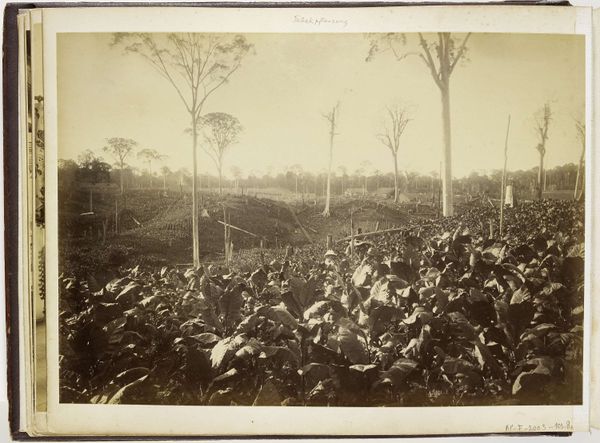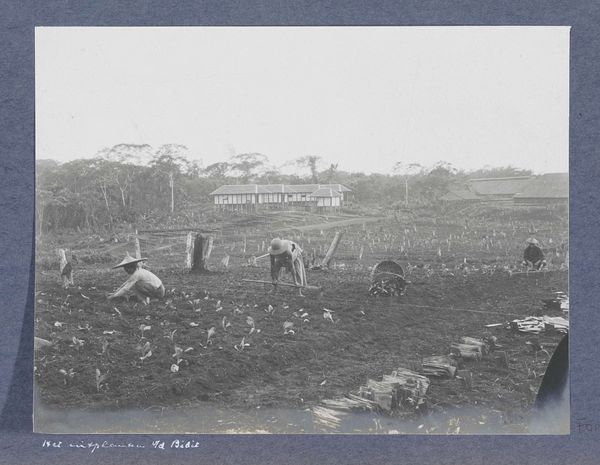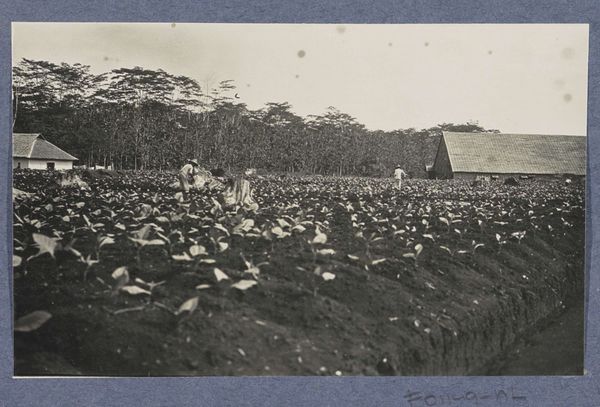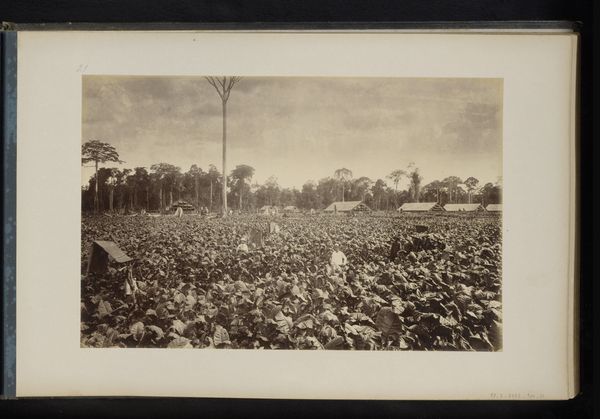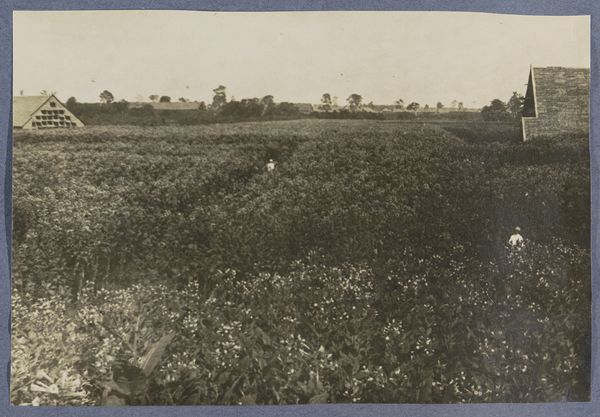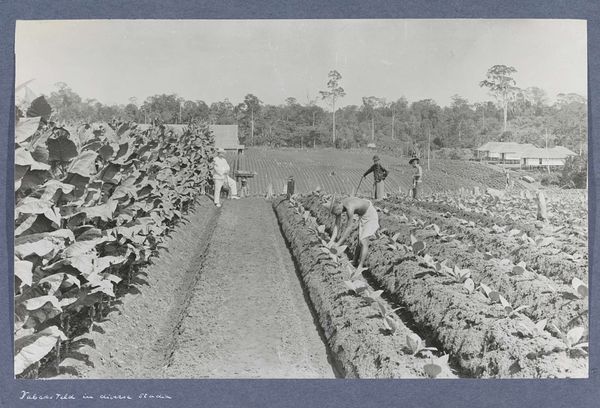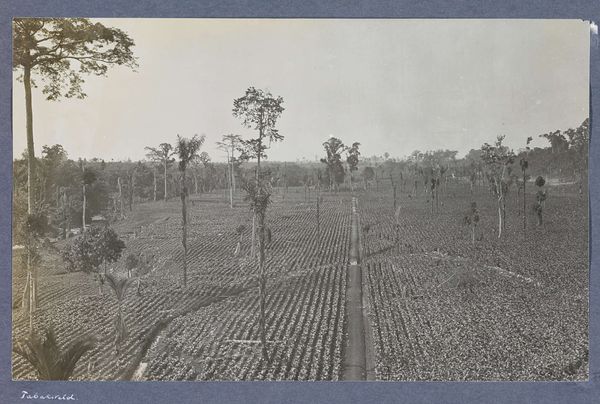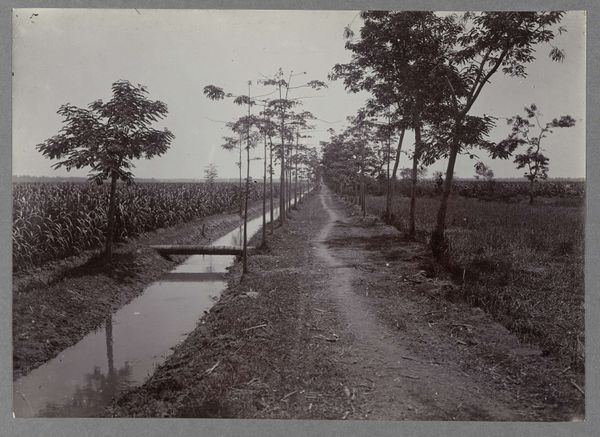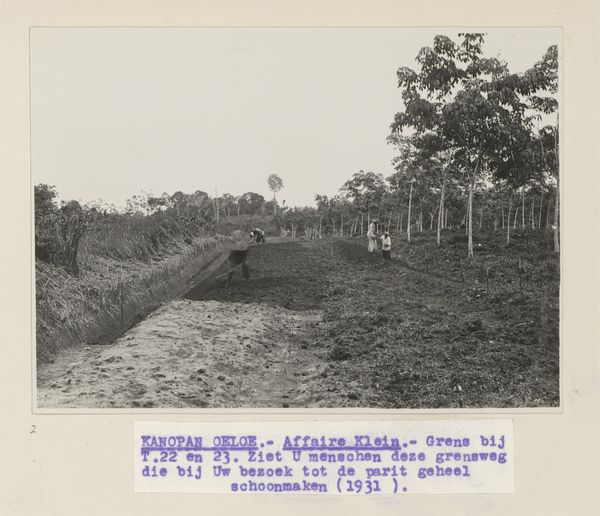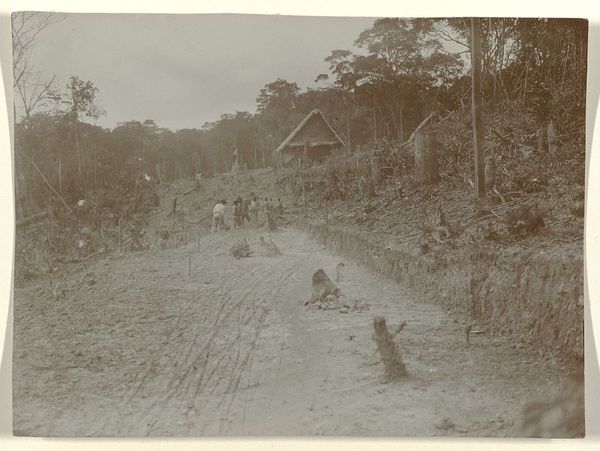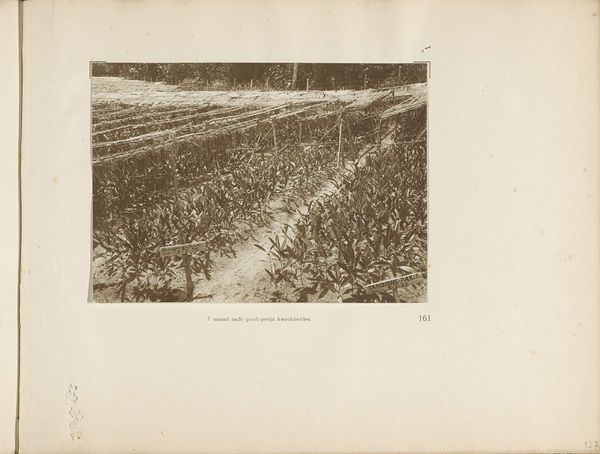
Tabaksveld van onderneming Deli-Toewa van de Deli Maatschappij op Sumatra c. 1900 - 1920
0:00
0:00
print, photography
#
still-life-photography
# print
#
landscape
#
photography
Dimensions: height 79 mm, width 128 mm
Copyright: Rijks Museum: Open Domain
Editor: This photograph, taken sometime between 1900 and 1920, depicts the Tabaksveld van onderneming Deli-Toewa van de Deli Maatschappij op Sumatra, which translates to the Tobacco field of the Deli-Toewa company of the Deli Maatschappij on Sumatra. It's a landscape shot, a seemingly endless field of crops. It's incredibly serene and vast, but also strangely…organized? What are your initial thoughts? Curator: The organisation is precisely what arrests me. This image is less about pastoral serenity and more a record of production, an inventory. We see a landscape reshaped for commodity. Look at the careful furrows, the almost militant rows of tobacco plants. How does the image’s composition – the converging lines, the way the crops stretch into the distance – inform your sense of "vastness?” Editor: Well, the lines create depth, definitely giving a sense of scale to the plantation, or perhaps "factory" would be a better term to highlight your point? Curator: Exactly. Consider also the technology used. The photographic process itself allows for the reproduction and distribution of this image, advertising the yield of the crop, almost inviting investment, while eliding all manual process, all labor. The artistry here exists to facilitate capitalist consumption. Does that influence how you view it? Editor: It certainly changes my perspective. Seeing it as a sort of advertisement or inventory – that highlights the systematic control over the land and its resources, obscuring the work that happened in that very field. It feels a bit unsettling now. Curator: Precisely. And remember, the photographic print, itself a commodity, is integral to the historical and cultural narratives linked with the raw material that made it possible. The print is a part of this cycle of creation and exchange. Editor: I see how looking at the materials and process really reveals hidden dimensions. Thank you for opening my eyes! Curator: My pleasure! It’s these types of complex interplays that offer rich art insights.
Comments
No comments
Be the first to comment and join the conversation on the ultimate creative platform.
